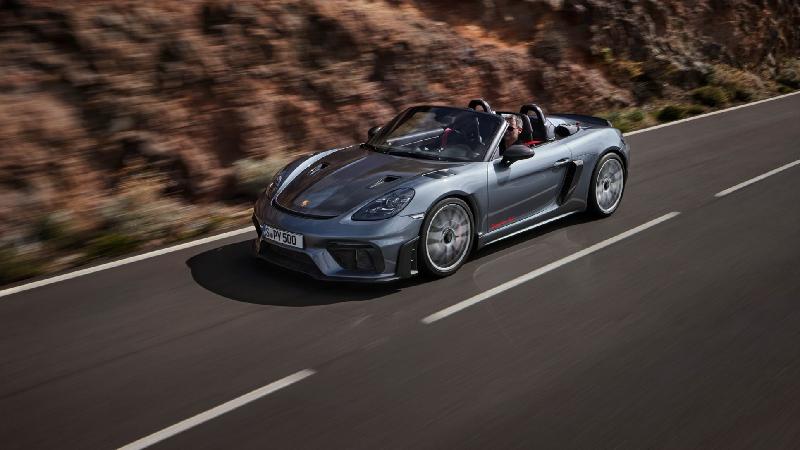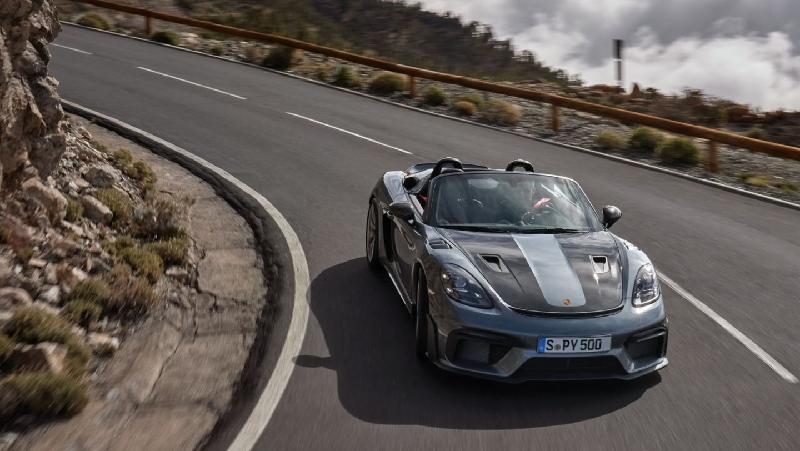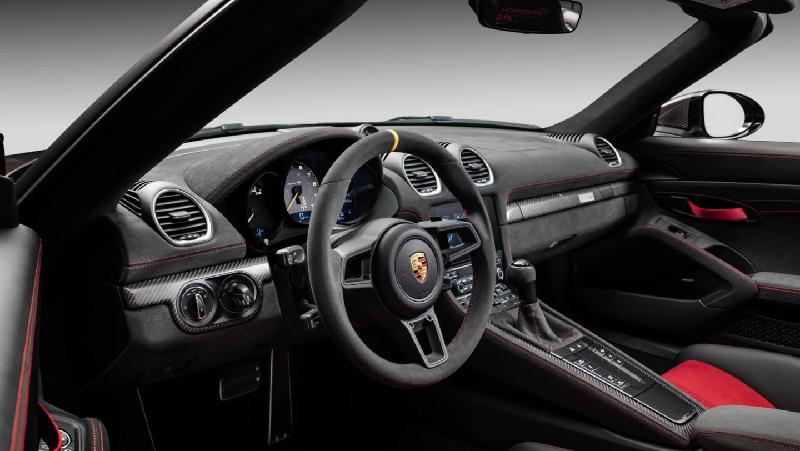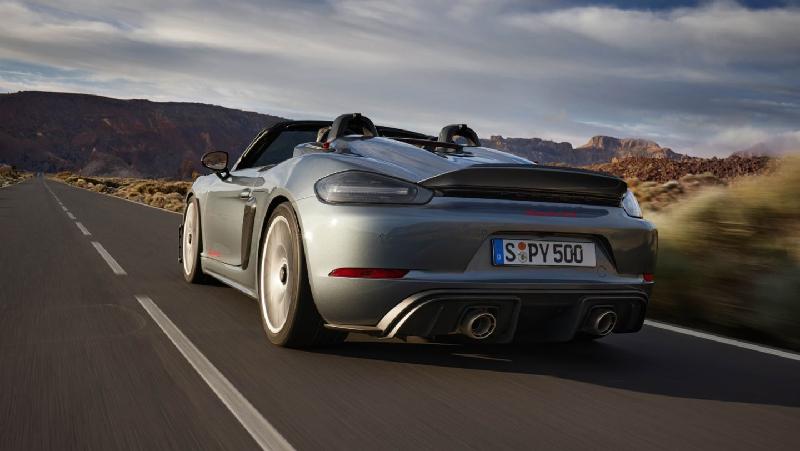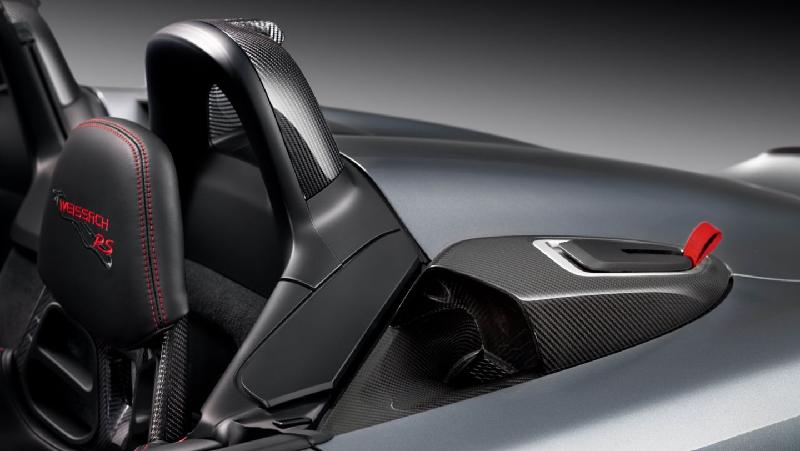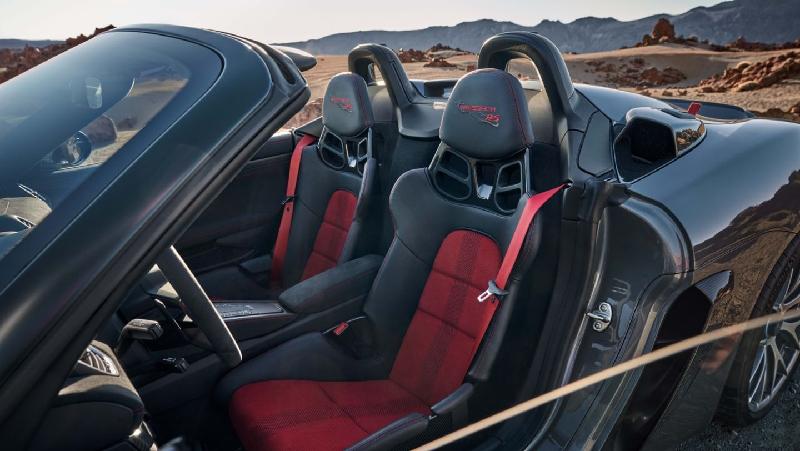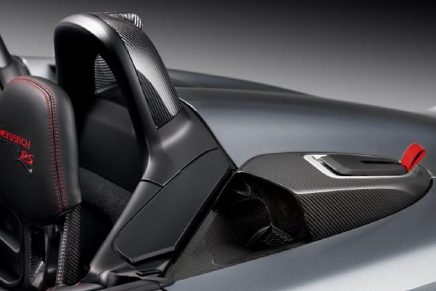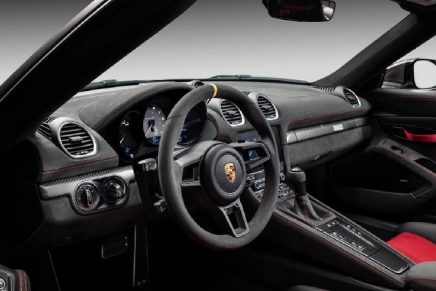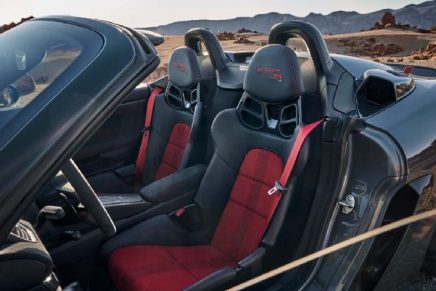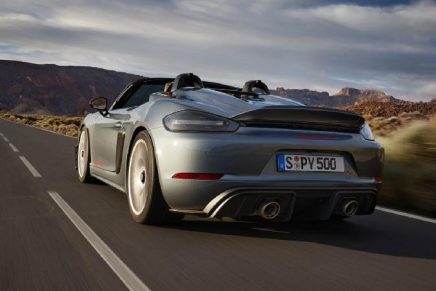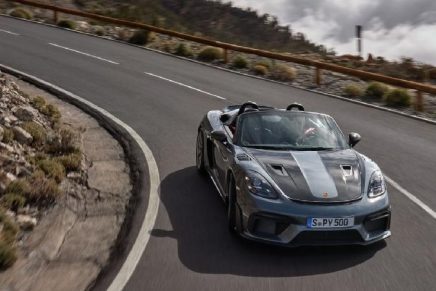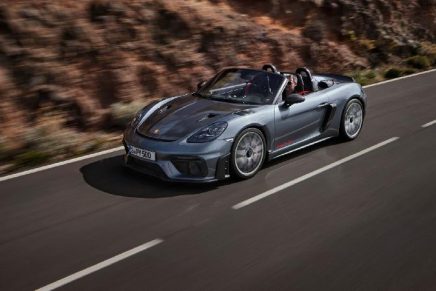The 718 Spyder RS raises driving pleasure to a new level for open-top cars.
The new Porsche 718 Spyder RS is the most powerful version yet of the popular mid-engined roadster.
Thirty years after the presentation of the Boxster concept car, Porsche is launching the most powerful version yet of the popular mid-engined roadster: the new Porsche 718 Spyder RS. For the first time, the high-revving naturally aspirated engine from the 911 GT3 is being deployed in an open-topped mid-engined sports car. The new Porsche 718 Spyder RS celebrates its public premiere in June at the festivities marking 75 years of Porsche Sports Cars in Stuttgart-Zuffenhausen. Shortly afterwards, it will make an appearance at the Goodwood Festival of Speed in England.
The new 718 Spyder RS is the open-top counterpart to the 718 Cayman GT4 RS.
Porsche has unveiled its latest addition to the lineup of mid-engined roadsters, the Porsche 718 Spyder RS. Boasting a powerful engine derived from the 911 GT3 and a lightweight construction, this open-top sports car aims to captivate driving enthusiasts.
Strengths:
High-Revving Naturally Aspirated Engine:
The highlight of the 718 Spyder RS is its deployment of the high-revving naturally aspirated six-cylinder boxer engine from the 911 GT3. Generating an impressive 368 kW (500 PS) and producing an exhilarating engine sound, it provides a thrilling driving experience. This power unit’s presence in a mid-engined sports car enhances the car’s performance and sets it apart from its competitors.
Exceptional Performance:
With a short-ratio seven-speed PDK transmission, the 718 Spyder RS sprints from 0 to 100 km/h in just 3.4 seconds. Its top speed of 308 km/h ensures an adrenaline-fueled ride. Compared to its non-RS counterpart, it benefits from an additional 59 kW (80 PS) and accelerates faster, making it a formidable contender in its segment.
Agile and Precise Chassis:
The sports suspension, derived from the 718 Cayman GT4 RS, ensures outstanding precision and agility. The Porsche Active Suspension Management (PASM) with sports tuning, Porsche Torque Vectoring (PTV), and ball-jointed suspension bearings contribute to razor-sharp steering and neutral handling. Drivers can also adjust various settings, allowing for a personalized driving experience.
Lightweight Construction:
Porsche’s commitment to lightweight construction is evident in the 718 Spyder RS. Its purist soft-top design reduces weight, and the manual single-layer lightweight soft-top can be easily removed. Weighing just 18.3 kg, the roof contributes to the overall weight reduction of the vehicle, enhancing its performance and handling.
Balanced Aerodynamics:
The aerodynamic design of the 718 Spyder RS ensures optimal balance and stability at high speeds. The front end, with its carbon-fiber reinforced plastic (CFRP) bonnet and strategically placed air outlets and ducts, enhances downforce and brake cooling. The tear-off edge-shaped ducktail and coordinated aerodynamic components complete the car’s sleek and functional design.
Weaknesses:
Limited Transmission Options:
The new 718 Spyder RS is exclusively available with the Porsche dual clutch transmission (PDK). While the PDK guarantees lightning-fast gear shifts and maximum performance, some driving enthusiasts may prefer the engagement and involvement of a manual transmission. The absence of a manual gearbox option might disappoint purists.
Limited Practicality:
As a two-seater sports car, the 718 Spyder RS prioritizes performance over practicality. The focus on lightweight construction and the absence of rear seats limit storage space and passenger capacity. This may pose a challenge for those seeking a more versatile and spacious car for everyday use.
The Porsche 718 Spyder RS impresses with its powerful naturally aspirated engine, exceptional performance, and lightweight construction. It offers an exhilarating driving experience and showcases Porsche’s dedication to engineering excellence. However, the absence of a manual transmission and limited practicality might be considerations for potential buyers. Ultimately, the 718 Spyder RS stands as an enticing option for driving enthusiasts who prioritize thrilling performance and appreciate the distinctive Porsche experience.
Porsche and Hydro unite to further decarbonize the supply chain of sportscars
Porsche AG and Norsk Hydro ASA will work together to further reduce the carbon footprint of Porsche’s car models by using low-carbon aluminium and extrusions from Hydro. In addition, the two companies will collaborate on an innovative value chain concept for battery materials and its recycling. The German luxury sports car maker and the Norwegian industrial company have signed an agreement in Oslo today, to bolster to the sustainability strategies of both companies.
Hydro will deliver Porsche and several of Porsche’s component suppliers with its low-carbon aluminium offering, Hydro Reduxa 4.0 and lower. This primary aluminium alloy has one of the lowest CO2 footprints on the market today and is produced with renewable energy. The footprint covers the emissions from the mine to the metal. By 2025 Hydro will enable Porsche to reduce the footprint of the aluminium in future vehicle projects to around 3.5 kilograms of CO2 per kilogram aluminium used. This is approx. 60 percent lower than the average primary aluminium consumed in Europe currently.

